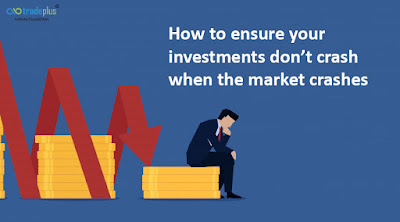How to ensure your investments don’t crash when the market crashes
Investment Strategy
Let us begin with a caveat here. When the market crashes by 35%, it is very unlikely that your portfolio will even remain flat; forget about positive returns. That is just not practical. Your investment strategy must be focused on two things viz. ensuring that your long term goals are not impacted and ensuring that you manage risk effectively. To ensure that your portfolio does not crash with the market, here are 6 things to ensure.
1. When you create a portfolio, put your goals at the centre
You cannot start building your portfolio like Alice in Wonderland. You need to know what you are investing towards. Your portfolio must be linked to your long term and short term goals; not an exercise in isolation. If you have a long term goal that stretches to about 15-20 years; like retirement or your child’s education, then you can use a diversified portfolio of equities or equity funds for the same. In that case, don’t worry too much about the vagaries of the market. What happens if the portfolio loses value around your goal post? The answer is to start shifting to liquid assets at least one year before your actual goal post date.
2. Don’t put all your eggs in one basket
Diversification happens at multiple levels. For example, you need to diversify your portfolio across sectors; too much of steel or banking is not a good idea. Secondly, you need to diversify your portfolio across themes; banking, NBFCs, realty and autos are all rate sensitive. Thirdly, ensure that the stocks in your portfolio have low correlation. If you have a portfolio of stocks that are from different sectors and themes but correlations are high, then there is no way you are going to achieve diversification.
3. When situations change, your portfolios must shift too
Rebalancing here refers to something else. We are referring to rule-based rebalancing. For example, you can set P/E ranges of 12X on the downside and 27X on the upside. Closer to the lower range, you gradually start increasing your exposure to equities and you start reducing equities closer to the upper range. You can also set a similar range for interest rates. Reduce your G-Sec portfolio at lower yields and increase it at higher yields.
4. Have two portfolio sets; core and satellite
The core portfolio is linked to your long term goals. To the extent possible, avoid tampering with this portfolio unless there is a strong justification for rebalancing. The satellite portfolio is the portfolio where you seek opportunities. What is the point of being in equity markets if you don’t tap the opportunities? There are times when the growth could be slowing or when a weaker rupee could be making IT and pharma attractive. These are opportunities you must tap and make profits in your satellite portfolio.
5. A gradual SIP approach works best for you
In this case, you don’t put all your money in one go. This is very true if markets are volatile. Quite often, we buy or sell a stock and then regret having done it too early. Never be in a hurry to buy or sell a stock and try to take a phased approach. The longer you spread your money across the right stocks at the right opportunities the lower will be your cost. The SIP is a lot more efficient for you compared to timing the market, which is anyway impractical and hardly adds much value.
6. Enrich your investments in bad times with futures and options
Investors have generally been wary about the use of futures and options due to their potential to magnify losses. Avoid speculating in F&O and instead you can use these to protect your portfolio. For example, if you are long on RIL and the stock is up by 50% in the last one year, you can sell futures when you sense uncertainty in the market. On the one hand you have locked in your profits but if the market does crash then you can book profits on the futures and reduce the cost of your stock holding. Use these sparingly, but to good effect.
Note
This Content Was Originally Published By http://blog.tradeplusonline.com/home/how-to-ensure-your-investments-dont-crash-when-the-market-crashes/ If you need more information kindly visit as https://www.tradeplusonline.com/



Comments
Post a Comment